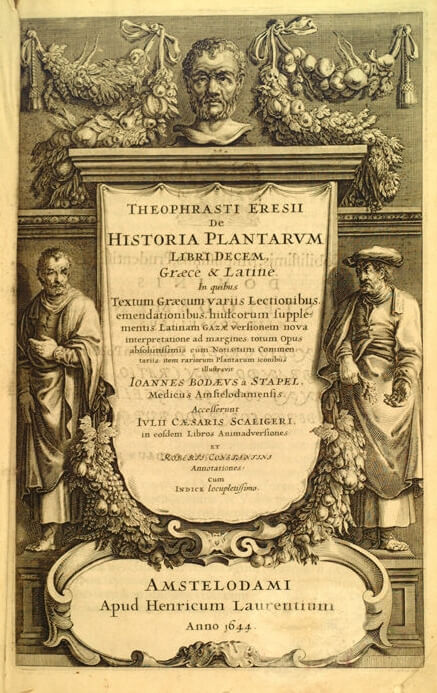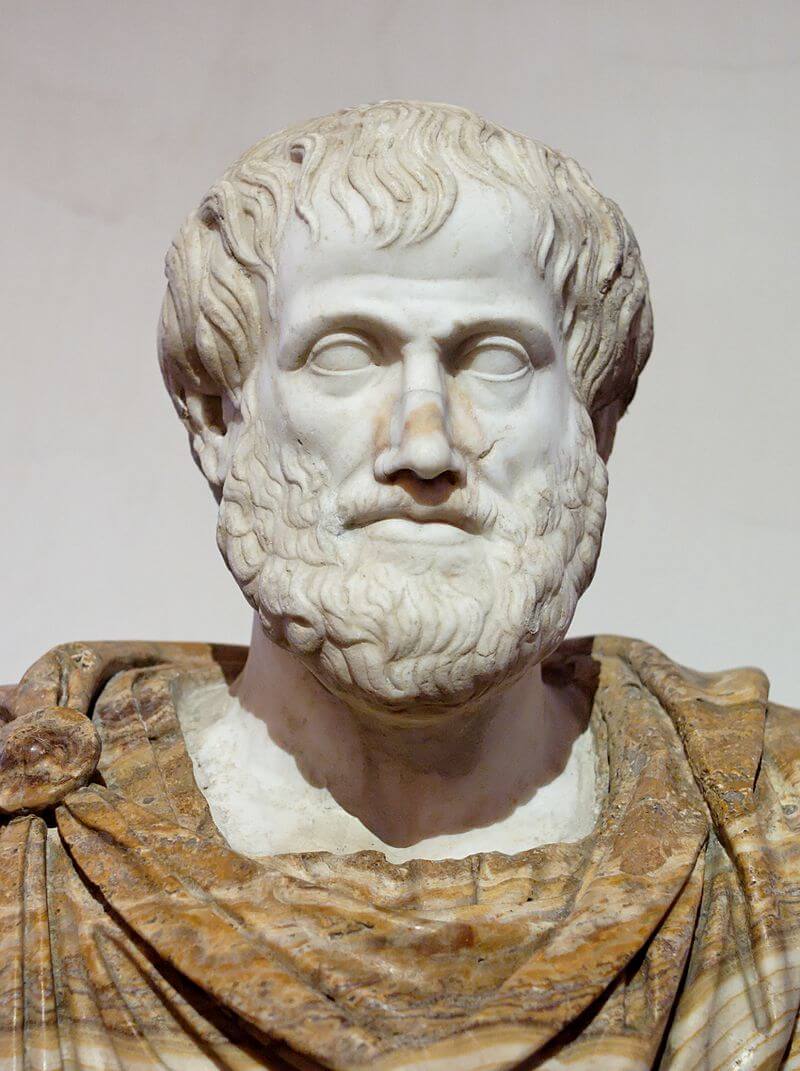
Plant taxonomy, or systematics, is one of the oldest biological disciplines, tracing back thousands of years to when the identification of medicinal, edible, poisonous plants as well as those suitable for crafting would prove essential for survival and later man’s mastery over the environment.
Paradigmatic to history of science were the ideas of Aristotle, in particular the science of logic. This method influenced systematists who sought to identify the essence of living things by examining many specimens and discarding variable characteristics and establishing constant characteristics. This, of course, does not work well for biology with species exhibiting significant variation between individuals. Thus, improved understanding required the emergence of empiricists, who did not believe in the essence of each form.
Other early historic figures include Theophrastus and Dioscorides, who were both Greek, but lived hundreds of years apart in classical Greece and the Roman period respectively. Theophrastus wrote hundreds of manuscripts describing plants including two large botanical treatise Enquiry into Plants and On the Causes of Plants. His works are the first surviving documents to describe plant parts, reproduction and sensitivity to climate as well as classify them by their properties as medicinal, edible and herbal for example. Dioscorides travelled widely as a physician in the Roman army and classified over five-hundred plants by their medicinal properties in his five volume De Materia Medica. Unlike Theophrastus, whose work was lost to the West till the renaissance, Dioscorides’ pharmacopoeia remained the primary botanical text for nearly fifteen hundred years.

It took to the 1600s for the next major advance in taxonomy with John Ray’s Methodus Plantarum Nova that published details of eighteen thousand species classified by their morphology – that is an organism’s form and structure. Previously, many taxonomic systems were arbitrary, sorting plants alphabetically or by their medical properties; although he has an interesting precursor in Andrea Cesalpino, who classified plants according to their fruit or seeds. Ray was devoted in his study of botany and based his system on all of a plant’s structural characteristics, including internal autonomy. He was also a cleric and can be viewed as an early parson-naturalist who saw science as an extension of his religious work, with God wishing for man to understand his creations by collecting and classifying organisms.
Next came Joseph Pitton de Tournefort’s Eléments de botanique, ou Méthode pour reconnaître les Plantes that while not particularly original and somewhat flawed was both well written and structured and would prove highly influential as an educational textbook, especially for the father of modern taxonomy Carl Linnaeus.
Linnaeus proved revolutionary, creating the taxonomical system in use today, laid out in the works Systema Naturae and Species Plantarum. He established the binominal system of nomenclature – that is, the use of a two part name for each species, consisting of the genus name and scientific epithet. This proved a huge advance over the long, excessively descriptive names used previously such as Rosa sylvestris inodora seu canina and Rosa sylvestra alba cum rubore, which now read simply as Rosa canina. It was in fact essential with the massive influx of species originating from the hitherto unexplored regions of Africa, Asia and the Americas in need of classification.
(These older names were influenced by the Aristotelian definition of form, split into genus – the general thing described – and the differentia, which gave its special characteristics. The major problem with this was as more species were discovered the differentia became longer and longer, hence the impractical name for the dog rose above.)

The publication of Charles Darwin’s The Origin of Species and his theory of evolution would again prove paradigmatic. Classifying plants by their morphology was clearly limited as organisms can possess similar characteristics but be unrelated. It was now the task of systematists to use classifications to reflect evolutionary history, placing closely related organisms together, and identifying unique species.
It wasn’t until the 1960s that systematists could accurately classify organisms according to their evolutionary history with the work of Walter Zimmerman and Willi Hennig in the preceding decades that established an objective criteria for determining the shared genetic attributes of living and fossil organisms. It was in this decade also that revolutions in molecular biology provided methods for determining the molecular structure of proteins and amino acids. It was techniques such as these that allowed systematists to supplement their analysis by comparing organisms’ genetic codes and identifying changes in genetic code.
Today systematists use multiple sources of evidence to establish a plant’s evolutionary history such as morphology, biochemistry, paleobotany (plant fossils), physiology (internal activities – i.e. photosynthesis), ecology (plants and their environment), biogeography (plant distribution), and molecular systematics (analysis of genetic code). This has been enabled with advances in computing that have allowed the analysis of large datasets.

Scientists estimate that there are ten to one hundred million species, so establishing their evolutionary history is a monumental undertaking. Currently, plant taxonomy is controlled by the International Codes of Botanical Nomenclature (ICBN) published by the International Association of Plant Taxonomy (IAPT), who revise codes at every International Botanic Congress. It should be stated that even with all the advances in understanding, scientists still disagree how to best classify organisms. For example what is a species?
One definition, known as the Biological Species Concept, defines a species as a “group of similar individuals which can reproduce successfully with each other while at the same time being reproductively isolated from other similar species”. The problem with this is identifying the point at which a particular population is distinctive from its parent species, as there are infinite possibilities to choose. Another definition, known as the Phylogenetic Species Concept, places more weight on the genetic differences between populations and their evolutionary history. Again the problem with this is that scientists can identify numerous genetically distinct populations, greatly increasing the number of known species.
To conclude, plant taxonomy is an ongoing project that will likely never end due to divisions about the importance of a particular characteristic and the discovery of new species and fossils. Nevertheless, the work to date has produced a logical system of classification that makes identifying plants and their relatives relatively easy.
If you would like to know more about the challenges of classification a great overview can be found here. If you would like a simple overview of the classification of plants, a table can be found here. If you would like to know more about taxonomy, especially the ranks you are likely to come across when browsing for plants, please read our article: What is the Difference Between Genus, Species, Variety and Cultivar?
–
Jorge works in the Primrose marketing team. He is an avid reader, although struggles to stick to one topic!
His ideal afternoon would involve a long walk, before settling down for scones.
Jorge is a journeyman gardener with experience in growing crops.